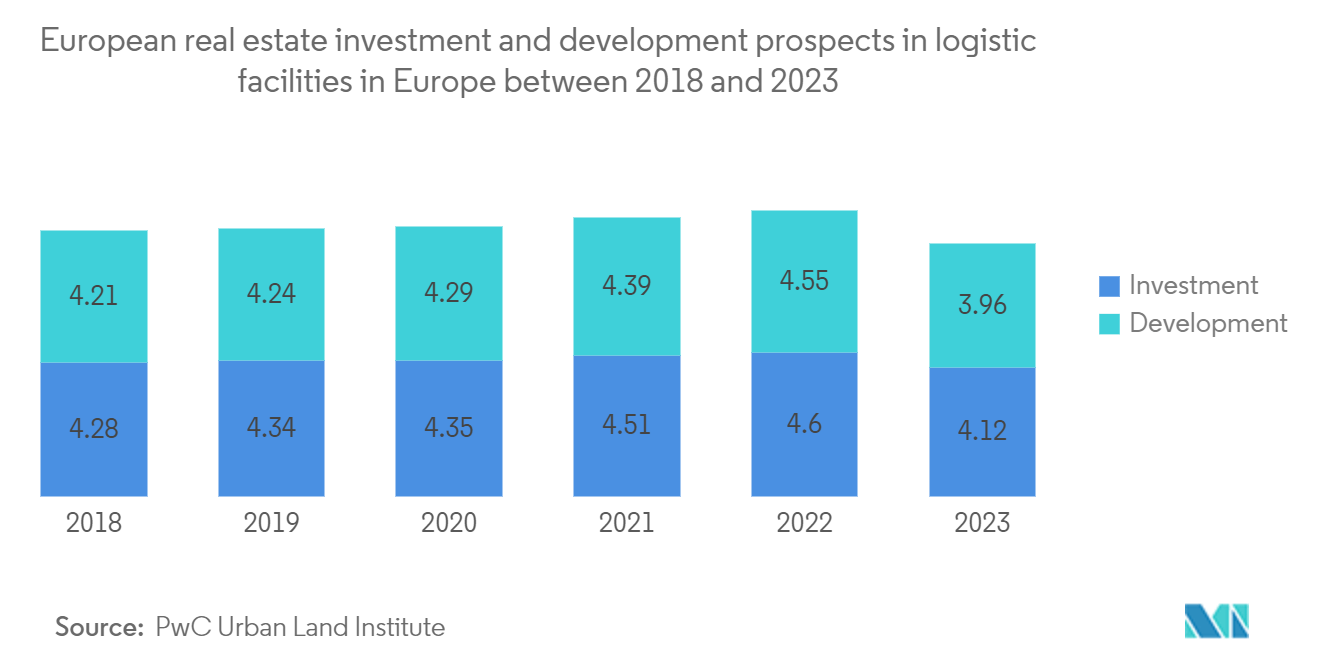Market Trends of Europe Pharmaceutical Warehousing Industry
Rise in the demand Pharmaceutical
The research-based pharmaceutical industry can play a critical role in restoring Europe to growth and ensuring future competitiveness in an advancing global economy. In 2022, it invested an estimated EUR 44,500 million (USD 47,503 million) in R&D in Europe. Europe is now facing increasing competition from emerging economies, rapid growth in the market, and research environments in countries such as China and Korea. These countries are contributing to the move of economic and research activities to non-European markets. The geographical balance of the pharmaceutical market, and ultimately the R&D base, is likely to shift gradually towards fast-growing emerging economies.
The pharmaceutical industry is the high-technology sector with the highest added value per person employed, significantly higher than the average value for high-tech and manufacturing industries. The pharmaceutical industry is also the sector with the highest ratio of R&D investment to net sales.
Pharmaceutical production in this context amounted to EUR 31.1 billion (USD 33.19 million). Pharmaceutical products were imported for EUR 58 billion (USD 61.91 million) and exported for EUR 82.8 billion (USD 88.38 million). Switzerland, the USA, and the Netherlands are critical suppliers and customers. In Europe, Germany is the pharmaceutical market with the highest turnover, ahead of France, Italy, and Great Britain.
In 2022, 32.5% of EU pharmaceutical exports went to the United States. In 2019, this share stood at 36%.

Increased provision of end-to-end integrated services
Now, several cold chain service providers started offering end-to-end integrated services to end-users in the market. They are providing cold chain management services to customers and participating in their decision-making processes. Many service providers offer end-to-end cold chain management services like inventory management, order scheduling, order forecasting, warehousing, and delivery management.
Logistics providers today are delivering more complex and sensitive products over longer distances and, in some cases, across multiple countries. As a result, there is a heightened demand for tracking technology and cold chain packaging solutions that can protect product integrity and quality throughout deliveries.
Solutions based on Phase Change Technology (PCM) or “thermal batteries” use customized chemicals with specific freezing and melting points (ranging from +18 degrees Celsius for use in chocolates to 25 degrees Celsius for use in ice creams). In comparison to previously used glycols, these materials are designed to be non-toxic and non-flammable and, therefore, apt to be packed alongside food products. The proliferation of dark stores is also emerging as one sustainable option for cold storage.


